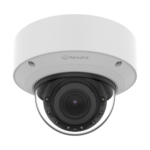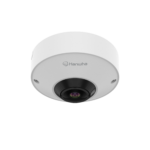2022.10.17
AI boosts security capabilities
AI boosts security capabilities

Interview by Seung-In Noh, Head of Hanwha Techwin AI lab
Artificial intelligence technology is coming to feel less conspicuous as it permeates ever more areas of our lives. At the same time, customers are demanding AI solutions that are more detailed and specialized.
In the last couple of years, the video surveillance industry has seen huge advancement in AI systems, and as AI technology becomes more widely used in the future, security solutions that apply AI will be vitalized in various ways.
Q1. Can you tell us about Hanwha Techwin AI lab?
Since its establishment in 2019, Hanwha Techwin AI lab has been specializing in AI-related development. Hanwha Techwin had been conducting research on how to apply AI to security solutions. In the process, AI technology has become a crucial facet in the security industry and the need has grown for a group that specializes in researching and developing that technology.
Hanwha Techwin AI lab doesn’t simply graft commercialized AI technology, but provides optimal products and solutions to customers using the company’s self-developed AI algorithm. Also, with the development of AI technology, we are working to provide customized solutions to meet the particular needs of customers.
Q2. Can you explain Hanwha Techwin’s AI applications?
Since the establishment of the AI lab, we have launched various AI products and applications.
Edge AI In the video security industry, video data enters the system through the camera. The process of artificially filtering and processing the data in the camera is called “Edge Computing.” Large amounts of data are processed and handled in the camera before the refined data is sent to the server level, and the computing reduces the resources and time required to analyze the data in the server.
Hanwha Techwin’s Edge AI technology also enables the AI camera to independently analyze the video data, and sort meaningful data before sending it to the server. For that reason, Edge AI is a core technology that improves the AI video security system’s overall operation and efficiency.
End to end AI solution Hanwha Techwin has comprehensive solutions that include cameras that apply AI technology, as well as storing devices, VMS and more. Smart and speedy AI searching is made possible by Metadata received by the AI camera that includes object information (such as personal details including age, sex, the color of articles of clothing, the presence of glasses, vehicle details such as type and color).
In addition, Hanwha Techwin’s AI NVR is paired with a camera that doesn’t have any AI functions. It enables the searching of information not provided by the camera, such as details of person, vehicle, face, and license plate.
WiseDetector Wise Detector is based on Machine Learning. It is a function that allows customers to have the device self-learn objects that are set according to each customer’s needs. This technology provides optimal solution based on the details of each customer’s usage.
COVID-19 Solution Throughout the coronavirus pandemic, AI technology has been utilized in carrying out public health measures, such as social distancing or mask wearing, over the last few years.
Hanwha Techwin developed a contact-free COVID-19 Solution based on AI, which can gauge social distancing, manage a target number of people in an indoor space, and determine whether people are wearing masks.
To briefly explain, in the function that detects social distancing, the AI camera measures the distance between people in real time. If the distance is closer than the designated distance, protocol measures can be communicated directly by a connected device, such as a speaker or a monitor.
The function that manages a target number of people indoors can detect the inflow of people at the entrance and help the user keep the number of people in the space below a specific number.
For the function that detects the mask wearing in real time, people who do not have their mouth or nose properly covered are designated as not wearing masks.
Vertical specialized AI solution Wisenet Road AI can quickly analyze not only the vehicle’s type, color and license plate, but also the brand and the name of the model. From the analysis, the system can quickly find the vehicle at the scene of a traffic accident based on the vehicles’ characteristics. For instance, if the user enters vehicle details like “XX Brand’s XX series, black,” the AI will show the location and the time of the vehicle that fits the description. If several cameras are connected, the route that the vehicle traversed can be determined.
Q3. Can you share your opinion about global AI trend?
The prominent global AI trend is the advancement of edge AI. Compared to the past, when Edge AI technology revolved around detecting objects and extracting each object attribute, AI technology has been developing toward high-level AI function, driven by the advancement of performance in NPU (Neural Network Processing).
NPU is a neural processing device that imitates the human brain’s network and can learn like a brain does. It is an AI semiconductor that can simultaneously process multiple forms of data, such as video, voice, text, and image.
TOPS, which is short for Trillion Operation Per second, is a tool used to evaluate the performance of AI chips, meaning it is the number of computing tasks that one chip can process in one second. Therefore, the higher the TOPS, the greater the number of tasks a chip can process. Simply stated, a higher TOPS means higher efficiency.
Only a few years ago, NPU had a TOPS functional performance of 1-2, but now NPUs are being launched with TOPS higher than 20. Those are then installed into the Edge.
With the gradual enhancement of the NPU performance, the system will surpass existing Edge AI performance. It will be installed with functions that can analyze and detect abnormal behavior to alert the user. Users will be able to utilize various AI algorithms by installing them into the Edge.
To assess the AI trend from a wider conceptual point of view, AI is being applied to various industrial areas in the form of applications. The essentials for establishing an AI system are AI model (algorithm), computing resources, and data. Apart from the pure hardware resources of the three, algorithm and data are closely related. In the end, since algorithms begin with the usage of database, the future global AI trend will be determined by continuous collection and learning of data, along with what kind of competitive data can be produced by processing those data.
Q4. Hanwha Techwin’s AI vision
As mentioned, usage of AI will be expanded and customers’ needs will be more detailed and differentiated with the advancement of Edge AI. Hanwha Techwin will develop AI algorithms that can be utilized in each user’s unique environment, while providing the algorithm in various forms.
Moreover, the key will be utilizing tremendous amounts of metadata that are collected based on AI technology, and we will need to consider how to prepare and utilize the data. Data will pile up in various ways, and how the data is processed can determine whether or not that data is valuable to the user.
Hanwha Techwin will secure data through Vision AI and take a further step to provide practical insight to customers while providing AI-based solutions that can deliver processed information that helps customers make the final decision.


